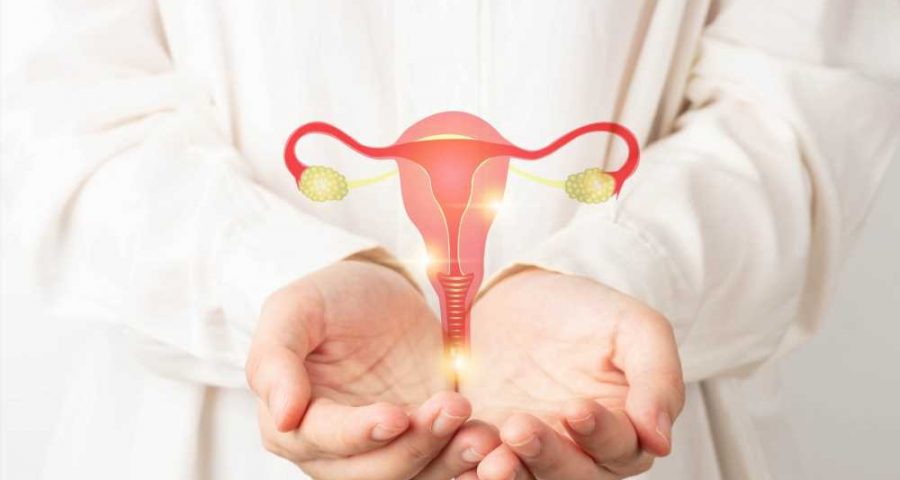In a recent study published in BMC Women's Health, researchers explore the involvement and altered expression of BBOX1 antisense ribonucleic acid (RNA) 1 (BBOX1-AS1) and microRNA-19b (miR-19b) in polycystic ovary syndrome (PCOS).
 Study: The long non-coding RNA BBOX1 antisense RNA 1 is upregulated in polycystic ovary syndrome (PCOS) and suppresses the role of microRNA-19b in the proliferation of ovarian granulose cells. Image Credit: Orawan Pattarawimonchai / Shutterstock.com
Study: The long non-coding RNA BBOX1 antisense RNA 1 is upregulated in polycystic ovary syndrome (PCOS) and suppresses the role of microRNA-19b in the proliferation of ovarian granulose cells. Image Credit: Orawan Pattarawimonchai / Shutterstock.com
What is PCOS?
BBOX1-AS1 is a long non-coding RNA (lncRNA) that is associated with several human diseases, including ovarian cancer. In ovarian cancer, BBOX1-AS1 upregulates podocalyxin-like protein 1 (PODXL) by sponging miR-361-3p, thereby promoting cancer progression.
PCOS is a clinical disorder that affects 4-12% of women of reproductive age. Since PCOS affects ovaries, the researchers of the current study hypothesized that BBOX1-AS1 also interacts with miR-19b to participate in PCOS.
Theca cells autonomously produce androgen and progesterone, whereas granulosa cells convert theca cells-produced androgens into estrogens. Taken together, these cells are key determinants of ovarian steroidogenesis.
In PCOS, elevated levels of gonadotropin-releasing hormone (GnRH) stimulate the proliferation of steroids and luteinizing hormone (LH)-producing granulosa cells. This leads to increased proliferation and reduced apoptosis of granulosa cells, as well as reduced follicle-stimulating hormone (FSH) levels, which likely facilitate PCOS progression.
These hormonal imbalances manifest as numerous cysts in the ovary, which, without proper treatment, reduce egg quality, prevent ovulation, and lead to infertility. To date, the cause of PCOS is unknown.
Genetic targets of PCOS
Understanding ncRNA functions in diseased states like PCOS and cancer could facilitate the development of novel treatments.
Moreover, ncRNAs, such as lncRNAs and microRNAs (miRNAs), do not contain coding information; however, they interact with DNAs, other RNAs, and proteins to participate in multiple biological processes, such as protein/gene expression regulation and chromatin stability. Therefore, lncRNAs could be the next-generation molecular targets for PCOS treatment.
Previous studies have reported the downregulation of MiR-19b in PCOS and how it enhances granulosa cell proliferation; however, its upstream regulator is unknown. Nevertheless, miR-19b may be a potential molecular target of PCOS treatment.
About the study
In the present study, researchers investigate the potential involvement of miR-19b-BBOX1-AS1 interaction in PCOS.
A total of 80 PCOS patients were recruited to participate in the study. The average age of the study cohort was about 30 years.
All study participants received the first round of in-vitro fertilization (IVF) treatment at Hainan Women and Children Medical Center in China to donate follicular fluid samples for this study. The control group comprised 80 females who received IVF treatment because of male factors, rather than a PCOS diagnosis.
KGN cells, which are human granulosa-like tumor cells, were used to prepare nuclear and cytoplasmic fractions to isolate RNA. Quantitative reverse transcription-polymerase chain reaction (RT-qPCR) was subsequently used to assess BBOX1-AS1 and miR-19b accumulation in follicular fluid. A correlation analysis was performed between miR-19b and BBOX1-AS1 across PCOS and control samples.
The RNA-RNA pulldown assay was used to determine the binding of miR-19b to the wild type (wt) and mutant (mut) BBOX1-AS1 in KGN cells. The BrdU assay allowed the researchers to investigate the regulatory role of BBOX1-AS1 and miR-19b in regulating KGN cell proliferation.
Study findings
In striking contrast to miR-19b, BBOX1-AS1 was highly upregulated in PCOS. These findings demonstrate the role of BBOX1-AS1 in PCOS, similar to its involvement with several different ovarian disorders.
The RNA-RNA pulldown assay confirmed that miR-19b binds to BBOX1-AS1; however, these ncRNAs were not correlated across PCOS and control samples. Correlation analysis suggested that the ncRNAs did not regulate the expression of one another.
In fact, only BBOX1-AS1-wt, rather than the mutant BBOX1-AS1, directly interacted with miR-19b, suppressed its activity and inhibited granulosa cell proliferation.
Conclusions
The current study characterized the role of the BBOX1-AS1/miR-19b axis in PCOS. Although BBOX1-AS1 expression was high, miR-19b was down-regulated in PCOS.
Future studies are needed to confirm that BBOX1-AS1 endogenously competes with miR-19b for its suppression to lead to PCOS ultimately. Furthermore, additional research is needed to elucidate the involvement of the BBOX1-AS1/miR-19b axis in oxidative stress-induced damage to ovaries underlying most ovarian disorders.
- Zhou, Z., Zhang, Y., Tan, C. et al. (2023). The long non-coding RNA BBOX1 antisense RNA 1 is upregulated in polycystic ovary syndrome (PCOS) and suppresses the role of microRNA-19b in the proliferation of ovarian granulose cells. BMC Women's Health 23(508). doi:10.1186/s12905-023-02632-5
Posted in: Molecular & Structural Biology | Medical Science News | Medical Research News | Medical Condition News | Women's Health News
Tags: Androgen, Antisense, Apoptosis, Assay, Cancer, Cell, Cell Proliferation, Children, Chromatin, Fertilization, Gene, Gene Expression, Genetic, Hormone, Infertility, IVF, MicroRNA, Ovarian Cancer, Ovaries, Ovulation, Oxidative Stress, Polycystic Ovary Syndrome, Polymerase, Polymerase Chain Reaction, Progesterone, Proliferation, Protein, Research, Ribonucleic Acid, RNA, Stress, Syndrome, Transcription, Tumor, Women's Health

Written by
Neha Mathur
Neha is a digital marketing professional based in Gurugram, India. She has a Master’s degree from the University of Rajasthan with a specialization in Biotechnology in 2008. She has experience in pre-clinical research as part of her research project in The Department of Toxicology at the prestigious Central Drug Research Institute (CDRI), Lucknow, India. She also holds a certification in C++ programming.
